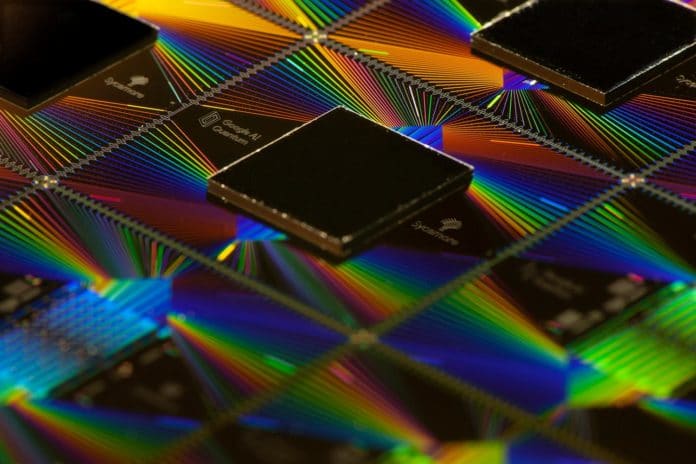There is a huge global effort to engineer a computer capable of harnessing the power of quantum physics, and it has formidable technical obstacles.
But today’s early prototypes of quantum computers are showing remarkable feats in creating a quantum computer, which will be able to carry out computations of unprecedented complexity using the power of quantum physics.
Time Crystal, a new phase of matter that repeats in time. It does it so indefinitely without any further input of energy. Same as a clock that runs forever without any batteries.
The search to realize this phase of matter has finally come to fruition.
In research published Nov. 30 in Nature, a team of scientists from Stanford University, Google Quantum AI, the Max Planck Institute for Physics of Complex Systems, and Oxford University detail their creation of a time crystal using Google’s Sycamore quantum computing hardware.
“The big picture is that we are taking the devices that are meant to be the quantum computers of the future and thinking of them as complex quantum systems in their own right,” said Matteo Ippoliti, a postdoctoral scholar at Stanford and co-lead author of the work. “Instead of computation, we’re putting the computer to work as a new experimental platform to realize and detect new phases of matter.”
“Time-crystals are a striking example of a new type of non-equilibrium quantum phase of matter,” said Vedika Khemani, assistant professor of physics at Stanford and a senior author of the paper. “While much of our understanding of condensed matter physics is based on equilibrium systems, these new quantum devices are providing us a fascinating window into new non-equilibrium regimes in many-body physics.”
The basic ingredients to make this time crystal are as follows: The physics equivalent of a fruit fly and something to give it a kick. The fruit fly of physics is the Ising model, a longstanding tool for understanding various physical phenomena – including phase transitions and magnetism – which consists of a lattice where each site is occupied by a particle that can be in two states represented as a spin up or down.
“It’s a completely robust phase of matter, where you’re not fine-tuning parameters or states, but your system is still quantum,” said Sondhi, professor of physics at Oxford and co-author of the paper. “There’s no feed of energy, there’s no drain of energy, and it keeps going forever, and it involves many strongly interacting particles.”
While this may sound suspiciously close to a “perpetual motion machine,” a closer look reveals that time crystals don’t break any laws of physics.
Entropy – a measure of disorder in the system – remains stationary over time, marginally satisfying the second law of thermodynamics by not decreasing.
Between the development of this plan for a time crystal and the quantum computer experiment that brought it to reality, many experiments by many different researchers achieved various almost-time-crystal milestones. However, providing all the ingredients in the recipe for “many-body localization” (the phenomenon that enables an infinitely stable time crystal) had remained an outstanding challenge.
For Khemani and her collaborators, the final step to time crystal success was working with a team at Google Quantum AI. Together, this group used Google’s Sycamore quantum computing hardware to program 20 “spins” using the quantum version of a classical computer’s bits of information, known as qubits.
Revealing just how intense the interest in time crystals is, another time crystal was published in Science this month. Researchers at the Delft University of Technology in the Netherlands created that crystal using qubits within a diamond.
“We managed to use the versatility of the quantum computer to help us analyze its own limitations,” said Moessner, co-author of the paper and director at the Max Planck Institute for Physics of Complex Systems. “It essentially told us how to correct for its own errors, so that the fingerprint of ideal time-crystalline behavior could be ascertained from finite time observations.”
A key signature of an ideal time crystal is that it shows indefinite oscillations from all states. Verifying this robustness to the choice of states was a key experimental challenge. The researchers devised a protocol to probe over a million states of their time crystal in just a single run of the machine, requiring mere milliseconds of runtime. This is like viewing a physical crystal from many angles to verify its repetitive structure.
“A unique feature of our quantum processor is its ability to create highly complex quantum states,” said Xiao Mi, a researcher at Google and co-lead author of the paper. “These states allow the phase structures of matter to be effectively verified without needing to investigate the entire computational space – an otherwise intractable task.”
Creating a new phase of matter is unquestionably exciting on a fundamental level. In addition, the fact that these researchers were able to do so points to the increasing usage of quantum computers for applications other than computing.
“I am optimistic that with more and better qubits, our approach can become a main method in studying non-equilibrium dynamics,” said Pedram Roushan, researcher at Google and senior author of the paper.
“We think that the most exciting use for quantum computers right now is as platforms for fundamental quantum physics,” said Ippoliti. “With the unique capabilities of these systems, there’s hope that you might discover some new phenomenon that you hadn’t predicted.”
Journal Reference
- Mi, X., Ippoliti, M., Quintana, C. et al. Time-Crystalline Eigenstate Order on a Quantum Processor. Nature (2021). DOI: 10.1038/s41586-021-04257-w
